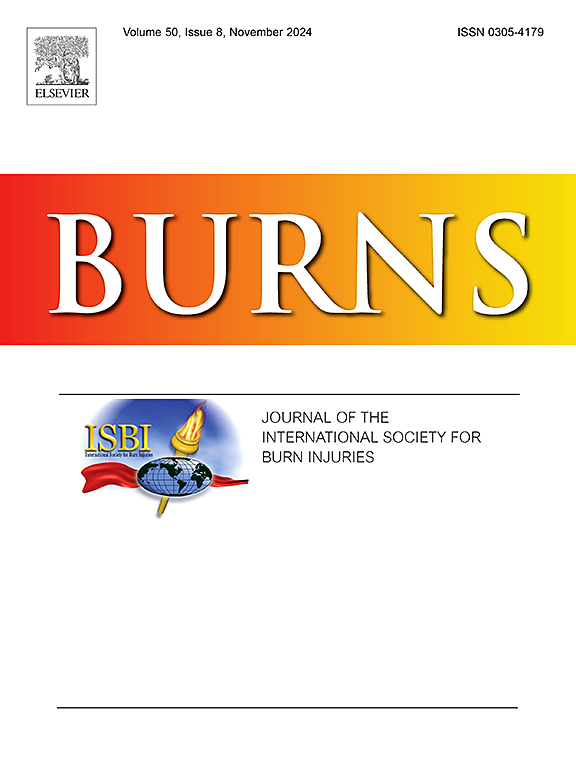Too much or too little? Fluid resuscitation in the first 24 h after severe burns: Evaluating the Parkland formula – A retrospective analysis of adult burn patients in Austria, Germany, and Switzerland 2015–2022
IF 3.2
3区 医学
Q2 CRITICAL CARE MEDICINE
引用次数: 0
Abstract
Background
Fluid resuscitation after a burn injury is one of the crucial aspects of acute therapy. The Parkland formula is a quick solution for determining the amount of fluid necessary in a specific situation, although it is not strictly followed or used in current practice. Therefore, we aimed to assess the association between a deviation from the Parkland formula and in-hospital mortality.
Methods
Based on data from 2235 burn patients recorded in the German Burn Registry from January 1st 2015 to December 31st 2022, we evaluate the relative deviation from the Parkland formula in either a positive or negative direction and its association with in-hospital mortality. We use mixed logistic regression models to assess this relationship and additionally evaluate its interaction with patient-level characteristics such as age, inhalation trauma (IHT), BMI, and percent of total body surface area (TBSA) affected.
Results
Without taking patient-level characteristics into account, both positive and negative relative deviations from the Parkland formula were associated with a higher probability of in-hospital mortality. After adjusting for sex, age, BMI, IHT, a third-degree burn, and TBSA, only the positive deviation from Parkland remained a risk factor for the outcome. We found that this negative effect of deviating from Parkland could be further modified by patient-level characteristics such as IHT, TBSA, and BMI, but not by the patient’s age.
Conclusion
The Parkland formula remains a useful tool for quick fluid calculations in the acute phase of severe burns. Deviations from the calculated amount are very common, with a higher incidence of over-infusion. Exceeding the Parkland formula increases mortality while under-infusion does not significantly affect mortality: ‘Less seems to be better than more.’.
求助全文
约1分钟内获得全文
求助全文
来源期刊

Burns
医学-皮肤病学
CiteScore
4.50
自引率
18.50%
发文量
304
审稿时长
72 days
期刊介绍:
Burns aims to foster the exchange of information among all engaged in preventing and treating the effects of burns. The journal focuses on clinical, scientific and social aspects of these injuries and covers the prevention of the injury, the epidemiology of such injuries and all aspects of treatment including development of new techniques and technologies and verification of existing ones. Regular features include clinical and scientific papers, state of the art reviews and descriptions of burn-care in practice.
Topics covered by Burns include: the effects of smoke on man and animals, their tissues and cells; the responses to and treatment of patients and animals with chemical injuries to the skin; the biological and clinical effects of cold injuries; surgical techniques which are, or may be relevant to the treatment of burned patients during the acute or reconstructive phase following injury; well controlled laboratory studies of the effectiveness of anti-microbial agents on infection and new materials on scarring and healing; inflammatory responses to injury, effectiveness of related agents and other compounds used to modify the physiological and cellular responses to the injury; experimental studies of burns and the outcome of burn wound healing; regenerative medicine concerning the skin.
 求助内容:
求助内容: 应助结果提醒方式:
应助结果提醒方式:


